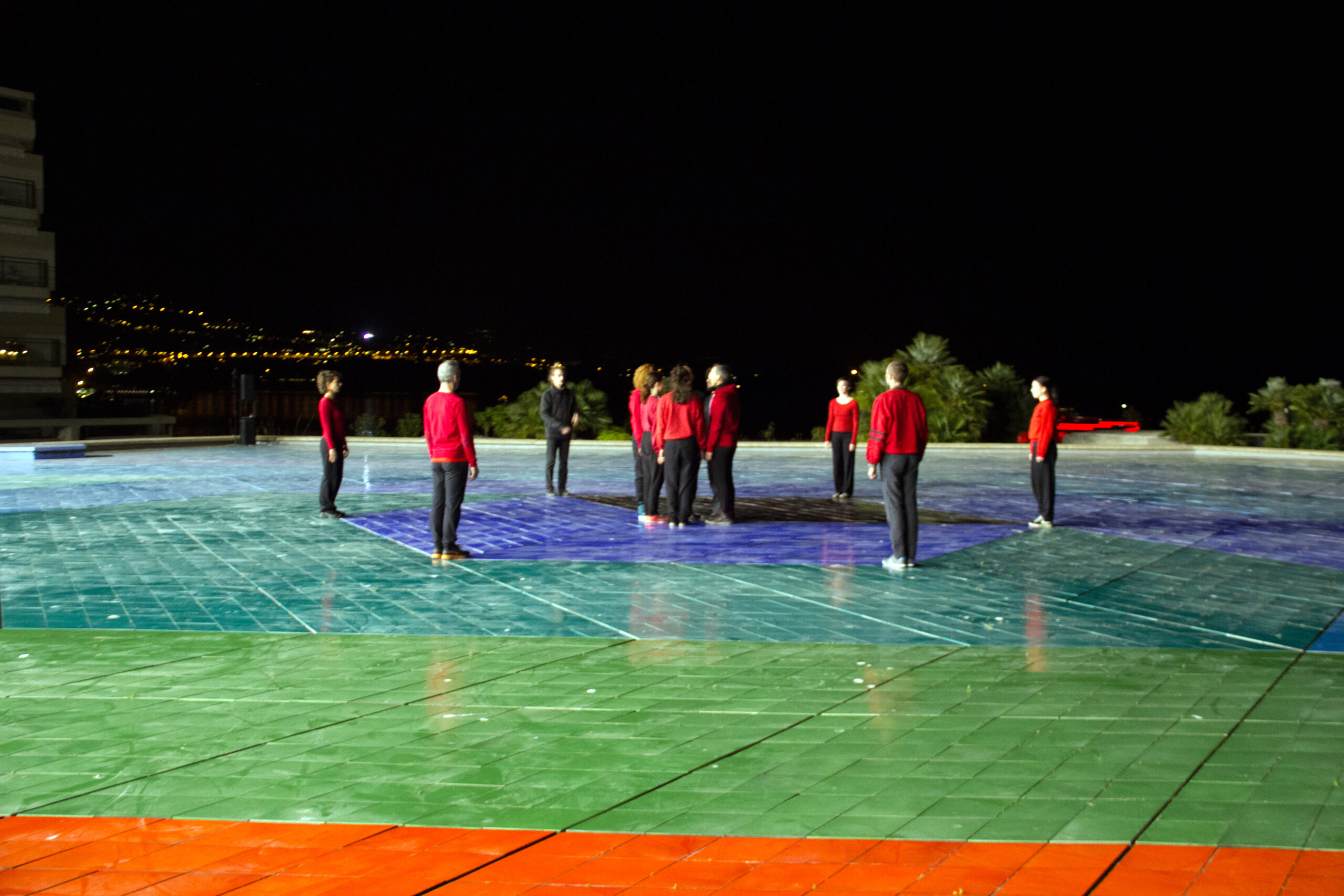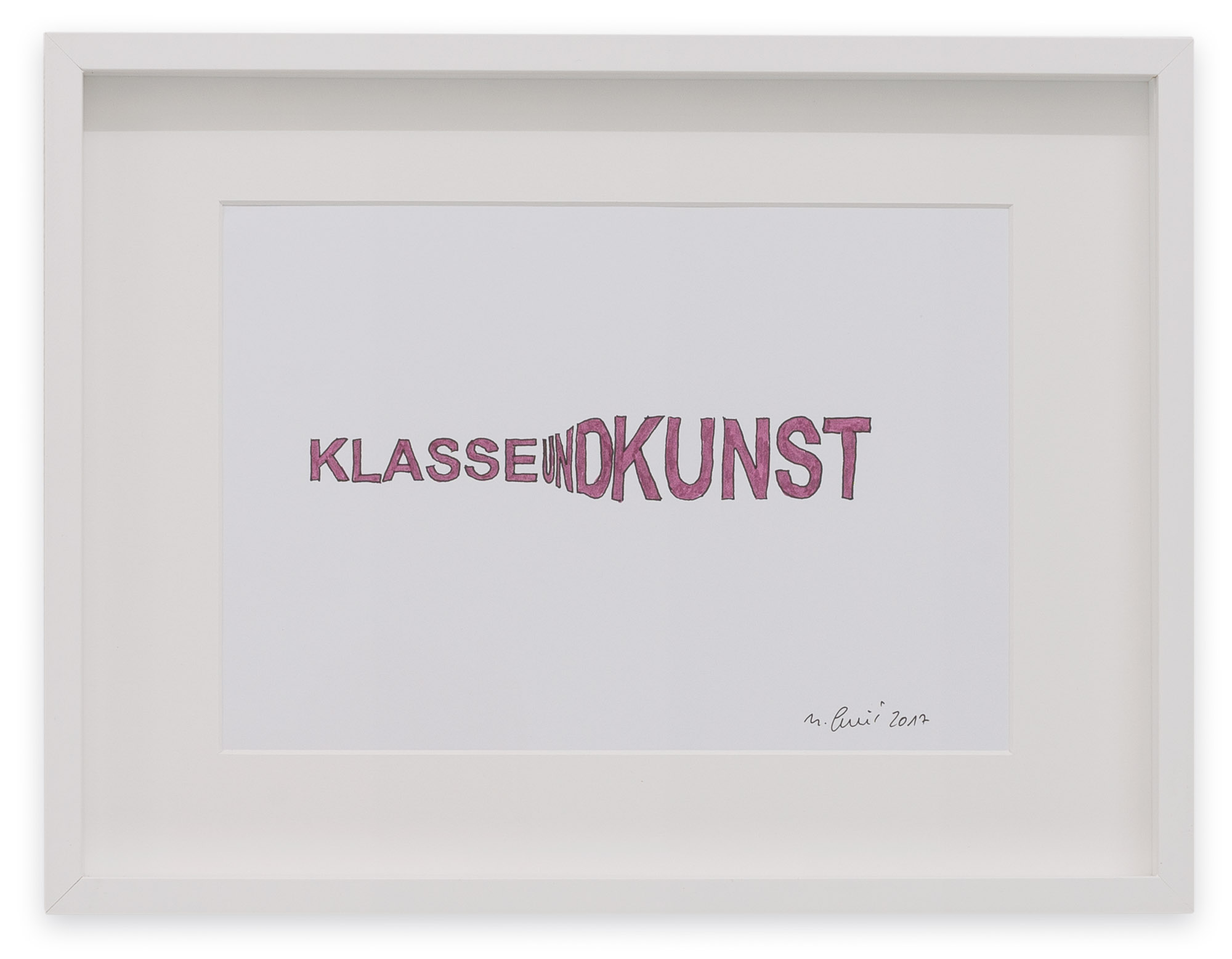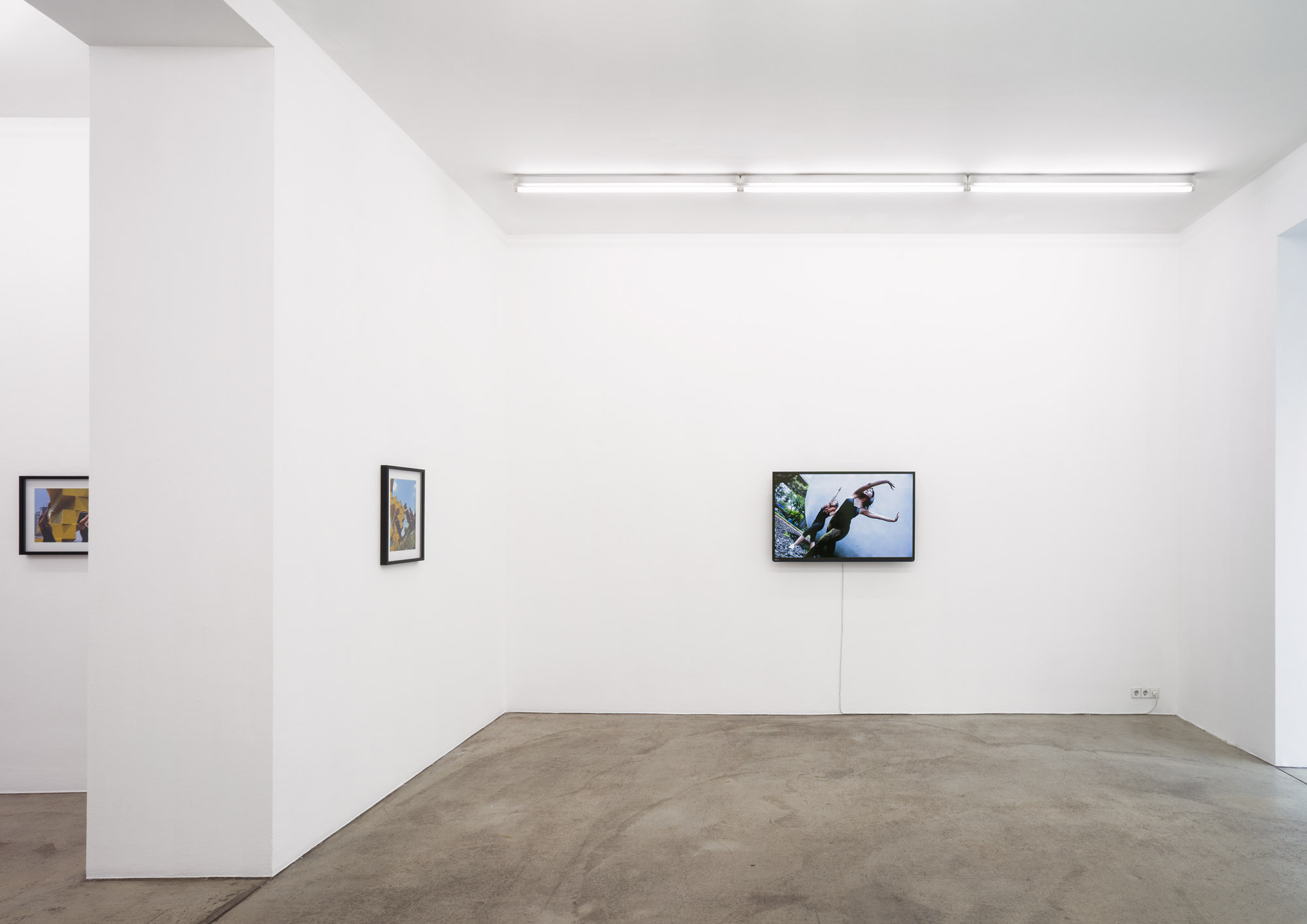
Marko Lulić
A Red Triangle Penetrating A Hexagon, 2016
C-Print
30 x 40 cm
42,4 x 52,4 cm (gerahmt)
Ed. of 3 + 2AP
Bei Performative Sculptures geht es, so wie auch bei Lulićs kürzlich zu Ende gegangener Mid-Career Survey Ausstellung Futurology im LENTOS Kunstmuseum Linz, um das Skulpturale. In den Verbesserten Partisanendenkmälern und anderen modernistischen Nachbauten, einem großen Teil seines Werkes, geht es dem Künstler um Raumpraxis, das heißt um das Ausloten des Verhältnisses von Körper und Raum sowie Körper und Skulptur. Es ist ein ähnlicher Prozess des Begreifens, der Demonumentalisierung und des Aufladens wie bei den erwähnten skulpturalen Arbeiten, den er bei seinen Performances und performativen Videos anwendet, nur ist die konkrete Methode eine andere. Nicht die Schrumpfung und Veränderung eines Objekts steht im Vordergrund, sondern das Erfahren einer Skulptur oder eines Raumes durch das tänzerische Besetzen eines Ortes. Die Arbeiten sind, wenn auch immateriell, skulptural gedacht und erarbeitet – Skulpturen im erweiterten Sinne, performative Skulpturen.
Marko Lulić realisierte A Red Triangle Penetrating A Hexagon 2016 für die Nuit Blanche in Monte-Carlo. Es war die erste Ausgabe von Nuit Blanche, für die das Fürstentum Monaco Jörg Heiser als Kurator eingeladen hatte. Das Konzept von Nuit Blanche bestand darin eine Reihe von Arbeiten internationaler KünstlerInnen auf der Promenade Monte-Carlos zu installieren oder aufzuführen, so dass man sie im Verlauf eines Abends sehen konnte. Marko Lulić suchte sich als Ort für seine Performance das Dach des Auditoriums Rainier III. Das Flachdach des Gebäudes ist sechseckig und mit bunten Fliesen gedeckt. Dies ist eine Arbeit im öffentlichen Raum von Victor Vasarely, die er Grace Kelly gewidmet hat. Lulićs Performance wurde nur einmal vor circa dreihundert ZuschauerInnen aufgeführt. Der Künstler entwickelte mit zwölf TänzerInnen eine Choreographie, die das gesamte Dach und Vasarelys geometrische Komposition als Muster und Dialogpartner nutzte. Lulić reagierte auf die Arbeit Vasarelys und zitierte zugleich El Lissitzkys Schlag die Weißen mit dem Roten Keil (“Клином красным бей белых!”) von 1919. Eine Referenz, die in Monaco etwas deplatziert erscheint. Gerade deshalb hat sie der Künstler bewusst gewählt.
Space-Girls Dance (Mexico) wurde von Lulić im Sommer 2017 in Mexiko-Stadt gedreht. Bereits 2009 realisierte der Künstler während seines Arbeitsaufenthaltes im Rahmen des Werkstattpreises der Erich Hauser Stiftung in Rottweil die Videoarbeit Space-Girl Dance 2009. Zu diesem Anlass wurde sein Katalog Death of the Monument publiziert. Er transferierte die Choreographie von Raquel Welchs Clip Space-Girl Dance, den sie 1970 in Mexiko-Stadt aufnahm, nach Rottweil. Der Drehort von Welchs Clip befand sich vor Skulpturen im öffentlichen Raum. Diese wurden zwei Jahre davor, 1968, als Teil des Kulturprogrammes der olympischen Spiele aufgestellt und vom deutsch-mexikanischen Künstler und Architekten Mathias Goeritz initiiert. Dieser Skulpturenweg heißt Ruta de la Amistad und erstreckt sich über eine Gesamtlänge von siebzehn Kilometern. Seit 2009 plante Lulić, ein Video vor den originalen Skulpturen auf der Ruta de la Amistad zu drehen. Das Projekt konnte nun 2017 realisiert werden und bildet mit der Arbeit aus dem Jahre 2009 einen eigenen Block. Dieser ist Teil einer beträchtlichen Anzahl von performativen Videos, die genau in diesem Zeitraum entstanden sind. Dabei wird Video als Befragung von Skulptur und Körper und als Skulptur selbst eingesetzt.
Marko Lulić
KlasseundKunst, 2017
Feinleiner/Filzstift auf Papier
32,2 x 42,2 cm
Marko Lulić
Futurology, 2017
Feinleiner/Filzstift auf Papier
32,2 x 42,2 cm
As with Lulić’s recent mid-career survey exhibition Futurology, on display until mid-September at the LENTOS Museum Linz, Performative Sculptures is all about the sculptural. In many of his works, such as Improved Partisan Monuments and other modernist replicas, the artist is concerned with spatial practice, i.e. exploring the relationship between body and space, body and sculpture. It is a similar process of comprehending, demomentalising and charging as in the aforementioned sculptural works, which he uses in his performances and performative videos, yet the specific method is different. The focus is not on shrinking and changing an object, but rather on experiencing a sculpture or space through the dance-like occupation of a place. The works are conceived and elaborated, albeit immaterially, sculpturally – sculptures in the broad sense, performative sculptures.
Marko Lulić realised A Red Triangle Penetrating A Hexagon in 2016 for the Nuit Blanche in Monte Carlo. It was the first edition of Nuit Blanche and the Principality of Monaco decided to invite Jörg Heiser to be curator. The concept behind the Nuit Blanche was to install or present a series of works by international artists on the Monte Carlo promenade so that they could be seen in the course of an evening. Marko Lulić chose the roof of the Rainier III Auditorium as the venue for his performance. The flat roof of the building is hexagonal and covered in colourful tiles. These are a work of public art by Victor Vasarely dedicated to Grace Kelly. Lulić’s performance took place only once in front of about three hundred spectators. The artist developed a choreography with twelve dancers using the whole roof and Vasarely’s geometric composition as pattern and dialogue partner. Lulić reacted to Vasarely‘s work while also citing El Lissitzky’s Beat the Whites with the Red Wedge (‘Клин ом красн ым бей белых!’) from 1919. A reference that seems a little out of place in Monaco. And that is precisely why the artist chose it.
Space-Girls Dance (Mexico) was filmed by Lulić in Mexico City in summer 2017. In 2009 the artist realized the video Space-Girl Dance 2009 during his time at the workshop prize of the Erich Hauser Foundation in Rottweil in 2009. On the same occasion his catalogue Death of the Monument was published. In the first work, he transferred the choreography of Raquel Welch’s clip Space-Girl Dance from 1970, which she had filmed in Mexico City, to Rottweil. Raquel Welch had recorded the clip in the public space, in front of sculptures that had been installed two years before, in 1968, as part of the cultural programme of the Olympic Games. Conceived by the German-Mexican artist and architect Mathias Goeritz, this sculpture trail is called Ruta de la Amistad and stretches over a total length of seventeen kilometres. Lulić had intended to shoot a video in front of the original sculptures on the Ruta de la Amistad since 2009 and now, in 2017, this project could finally be realised. It forms its own block with the work from 2009 and joins the by now considerable number of performative videos shot by Lulić during this period of time. Video is used as a survey of sculpture and body and as sculpture itself.






